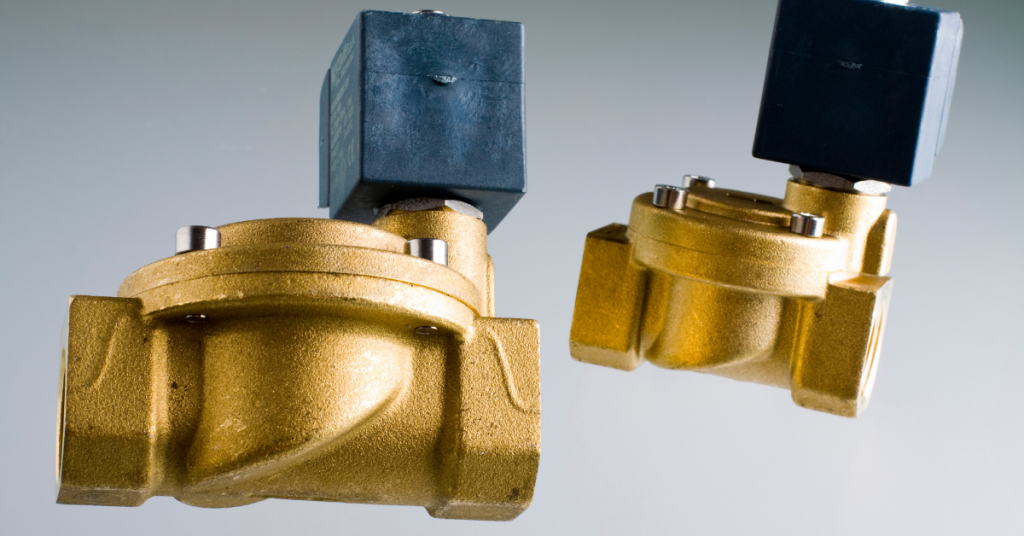A transmission solenoid or cylinoid is an electro-hydraulic valve that controls fluid flow into and throughout an automatic transmission. Solenoids can be normally open or normally closed. They operate via a voltage or current supplied by the transmission computer or controller.
There are many different types of transmissions, therefore there are also many different types of solenoids in each type of transmission. A common misconception is that when one fails, it will affect the entire system; this is not always true.
For example, if solenoid ‘A’ in an electronic four-speed overdrive failed, only the gear associated with that solenoid would lose functionality. Gear B and Gears C and D would continue to function unless another component was damaged.
What does the Cylinoids do in a transmission?
An electronic transmission solenoid can be referred to as a Cylinoid. A Cylinoid is an electro-hydraulic valve that controls fluid flow into and throughout an automatic transmission.
Solenoids can be normally open or normally closed, which means they are either always on (fully open) until the command is given by the controller to close it, or off (fully closed) until the controller instructs it to open. They operate via a voltage or current supplied by the transmission computer or controller.
The first cylinoids were introduced in 1981; however, they were not widely used until 1986 when GM employed them on its new 700R4/4L60E transmissions. The term “Cylinoid” originates from the piston-like motion of its moving part, which is cylindrical in shape.
Cylinoids for electronic transmissions have a number of purposes: gear selection, throttle settings, lockup clutch engagement/disengagement and torque converter clutch (TCC) disengagement/lockup.
Some transmissions also use a Cylinoid to apply the parking pawl when no gear is selected. Others still use it as a means to engage reverse gear without pressing any buttons on the shifter console.
Today, almost all electronically controlled automatic transmissions use solenoids to select gears. It would be nearly impossible to build a transmission without them due to their nature of extreme precision and the often high demand for more gears. The first purpose of a Cylinoid is to select which gear the transmission will be in next.
The second most common use for solenoids is throttle control. For example, manuals transmissions have a “sport” mode that changes the shift points on the transmission to give the car faster acceleration. This is achieved by simply engaging another solenoid on some models.
Another application is lockup torque converters (LTC) and it’s de-activation (DCTC). When engaged, LTC locks the torque converter causing all power to go directly to moving your vehicle; since it eliminates any engine drag during coasting or braking actions this provides better fuel economy at cruising speeds.
However, when downshifting the LTC can be a hindrance as the engine speed gets out of sync with the transmission causing a notchy shift. Therefore, most transmissions have a solenoid that will lock and unlock the torque converter to maximize fuel economy during highway driving.
A final application is TCC or torque converter clutch. The TCC uses fluid pressure from the transmission pump to disengage the torque converter from the driveshaft allowing it to spin faster for better fuel economy without sacrificing any takeoff power from a dead stop.
This is typically only found on electronically controlled four-speed automatics due to their need for higher efficiency at cruising speeds where three-speed automatics are designed more for performance . In 2008 Ford offered TCC on its six-speed automatic but only on the F-150.
Other electronic transmissions use Cylinoids to engage/disengage the parking pawl when no gear is selected. This eliminates any noise or vibration typically caused by traditional manual transmissions which are always in gear when not being shifted.
Other examples include EPS found in Jeeps with automatic transmissions and Ford’s paddle shift transmission . Ford’s system uses a solenoid for each individual paddle found behind the steering wheel allowing the car to mimic a true manual transmission in both performance and efficiency.

Solenoids have been used since 1981 though they were not widely used until 1986 when GM employed them on it’s 700R4/4L60E transmissions. The term “Cyloid” originates from the piston like motion of its moving part which is cylindrical in shape.
Today, almost all electronically controlled automatic transmissions use solenoids to select gears. It would be nearly impossible to build a transmission without them due to their nature of extreme precision and the often high demand for more gears.
The first purpose of a Cylinoid is to select which gear the transmission will be in next. Another application is throttle control. For example, manuals transmissions have a “sport” mode that changes the shift points on the transmission to give the car faster acceleration . This is achieved by simply engaging another solenoid on some models. Another application is lockup torque converters (LTC) and it’s de-activation (DCTC).
Conclusion:
Cylinoids do an important job and the transmission cannot function well without them. Thank you for reading this article to gain a better understanding of what the cylinoid does in an automatic transmission.




